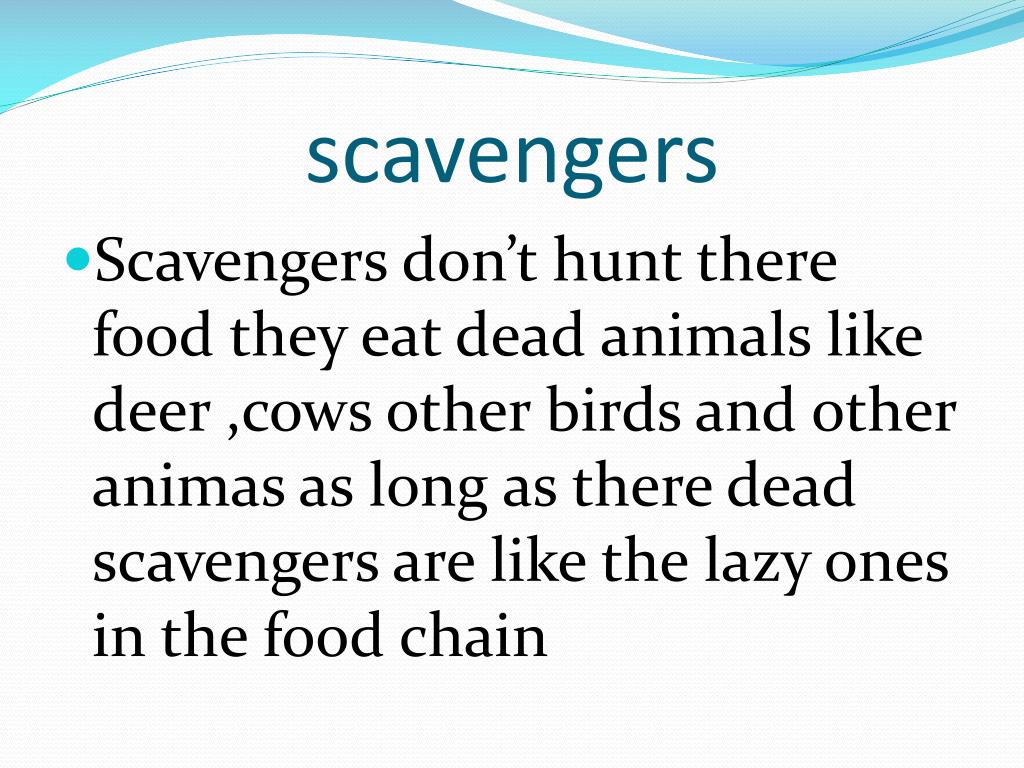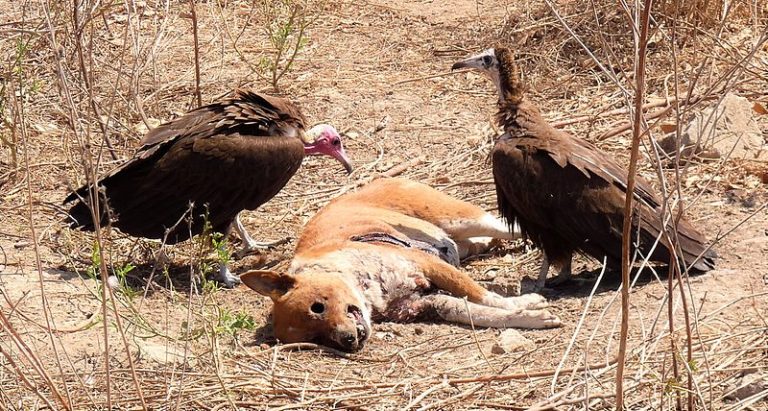
These include the termites that tend to build their nests in certain grasslands. These organisms tend to use their ferocity and size to scare and intimidate the actual original hunters.Īpart from that, there are scavengers that tend to use dead plant materials as their food. Some of the other examples include wolves, Leopards, and others. There are some examples of such scavengers such as jackals and hyenas. These are the scavengers that tend to use other methods in order to get their food. This can be attributed to the fact that there aren’t many carriers that can be found without spending too much energy. One of the rare forms of scavenging is obligate scavenging. Apart from that, the fly larvae are also one of the examples. There are invertebrate scavengers that tend to include blowflies and burying beetles.

The rate and process of scavenging are also affected by certain abiotic and biotic factors such as habitat, seasons, carcass sizes, as well as temperature. Consumption of dead animals, as well as plant materials, can actually be a good thing for the completion of the food cycle.Īpart from that, these animals also tend to help in overcoming the fluctuations that happen regarding the food resources that are found in the ecosystem. One of the main things to keep in mind about these animals is that they tend to play a very important role when it comes to preserving the ecosystem.

One of the main examples of these scavengers is the carrion beetles that tend to feed on the dead mass of other animals. These scavengers tend to live on the decomposing matter of animals. Scavengers are also known as carrion-feeders are basically the animals that tend to wholly or partially feed on the bodies of other animals that are dead. In this article, students are going to learn important facts about scavenger animals. However, there are certain herbivorous animals that tend to exhibit this behavior as well. When it comes to the actual definition of scavengers, it can be said that it refers to certain carnivores that feed on carrion. Our experienced and knowledgeable staff are standing by to help you understand the differences and recommend the most suitable and efficient product that serves your needs and exceeds your expectations.Scavengers are just the animals that tend to consume other dead animals and organisms that have actually died from other causes than predation. Contact Ecolink here to speak with a chemist and find out which type of oxygen scavengers will be best for your applications. Want To Learn More About Oxygen Scavengers and Find Suppliers?Įcolink is a trusted supplier of bulk chemicals and solvents that can help you find the best chemical solutions for your needs. Can be used with a wide variety of boiler sizes.It is specially produced for steam boilers as a scale and corrosion inhibitor and inorganic oxygen scavenger. Aids in the manufacture of renewable platform chemicals and sugarsĪn example of our inorganic oxygen scavengers is our Boiler Guard water treatment product.Widely used in the manufacture of PVC products, THF is also used as a solvent for synthetic or natural resins. An example of our organic oxygen scavenger is our Tetrahydrofuran (THF) high-purity, research grade organic solvent. Typically, inorganic oxygen scavengers are mineral based meaning non-carbon.Įcolink provides both organic and inorganic oxygen scavengers. Typically, organic oxygen scavengers are carbon based comprising compounds using carbon based molecules. What are the two primary types of oxygen scavengers?Īs a rule, generally oxygen scavengers are divided into organic and inorganic types. How do Oxygen Scavengers work? Oxygen scavengers are a concoction of natural compounds designed to react with oxygen in order to eliminate it (oxygen).


What are the different types of Oxygen Scavengers? For the purposes of understanding oxygen scavengers, an oxygen scavenger is a product comprising one or more reactive compounds that when combined with oxygen, reduce or completely remove oxygen in liquids or enclosed packaging in order to prolong the shelf life of a product.


 0 kommentar(er)
0 kommentar(er)
